




































































El perfil del comprador inmobiliario está cambiando a gran velocidad. La nueva generación de consumidores —más informada, digital y orientada a la experiencia— está redefiniendo las reglas del juego en el sector.
Hoy, comprar una vivienda ya no significa solo adquirir metros cuadrados: significa comprar propósito, flexibilidad y estilo de vida.
A medida que la vivienda se entrelaza con el trabajo remoto, el bienestar y la inversión, los agentes, agencias y desarrolladores deben evolucionar también.
El reto no es menor: seguir vendiendo en un mercado donde la gente no dejó de comprar, pero ya no compra de la misma forma.
¿Quién es el nuevo comprador?
Las nuevas generaciones —prin-

cipalmente millennials y centennials mayores (28 a 45 años)— se están convirtiendo en los actores principales del mercado inmobiliario, tanto en México como en los principales destinos turísticos y urbanos del país.
A diferencia de los compradores tradicionales, estos nuevos perfiles no priorizan la propiedad co-
mo símbolo de estatus, sino como una herramienta para equilibrar libertad, bienestar y rentabilidad.
Sus principales rasgos son:
Digitales y autodidactas: buscan, comparan y deciden con base en información en línea antes de
The profile of the real estate buyer is changing rapidly. The new generation of consumers— more informed, digital, and experience-oriented— is redefining the rules of the game in the sector.
Today, buying a home no longer means just acquiring square footage: it means buying purpose, flexibility, and lifestyle.
As housing becomes intertwined with remote work, well-being, and investment, agents, agencies, and developers must evolve as well.
The challenge is no small one: to continue selling in a market where people haven’t stopped buying, but they no longer buy in the same way.
The new generations—mainly older millennials and centennials (28 to 45 years old)—are becom-
ing the main players in the real estate market, both in Mexico and in the country’s main tourist and urban destinations.
Unlike traditional buyers, these new profiles don’t prioritize ownership as a status symbol, but rather as a tool to balance freedom, well-being, and profitability.
Their main characteristics are:
Digital and self-taught: they search, compare, and decide based on online information before contacting an agent.
Hybrid lifestyles: they work remotely or travel frequently, allowing them to live seasonally in different locations.
Conviction investors: they see property as an asset that can be
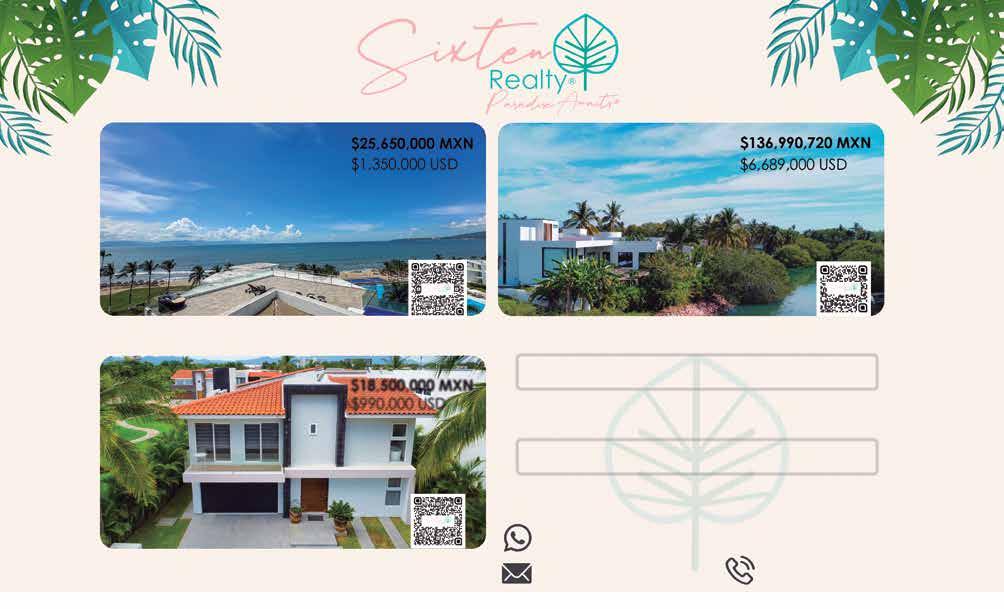






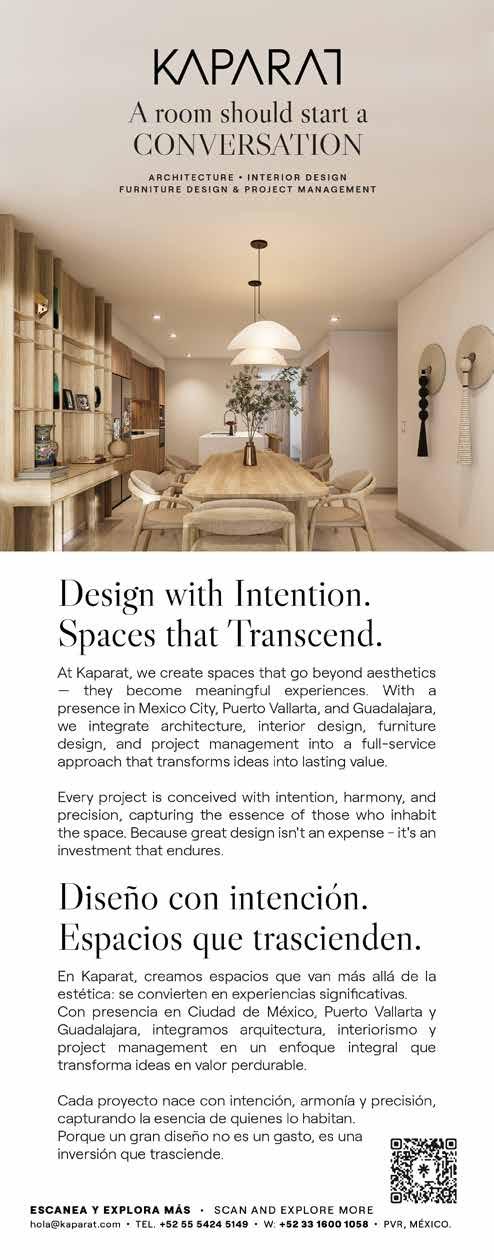
contactar a un agente.
Híbridos en su estilo de vida: trabajan en remoto o viajan con frecuencia, lo que les permite vivir por temporadas en distintos lugares.
Inversionistas por convicción: ven la propiedad como un activo que puede rentarse o generar retorno.
Conscientes del entorno: valoran eficiencia energética, sustentabilidad y conexión con la comunidad local.
Exigentes con el diseño y la ubicación: prefieren espacios más pequeños, pero bien diseñados, céntricos y con amenidades funcionales.
En resumen, buscan experiencias, no ladrillos.
Cómo están cambiando las reglas del juego
El comportamiento de este comprador ha transformado todo el proceso inmobiliario:
Del contacto físico al digital: el 85% de las búsquedas comienzan en línea (según Lamudi 2025).
De la venta emocional a la venta informada: la narrativa aspiracional por sí sola ya no basta; hoy pesa más la información técnica, financiera y de ubicación.
Del cliente pasivo al cliente experto: el nuevo comprador llega sabiendo precios, rendimientos y comparativos por zona.
De la propiedad fija al modelo flexible: buscan opciones como “live & rent” (vivir parte del año, rentar el resto) o invertir en preventa con potencial de uso futuro.
Qué buscan al comprar en México
Entre los factores que más influyen en su decisión destacan:
Ubicación con propósito: prefieren vivir cerca de centros urbanos, coworkings o comunidades con estilo de vida activo.
Diseño funcional: espacios versátiles con integración interior-exterior, terrazas y amenidades compartidas.
Rendimiento claro: buscan propiedades que puedan rentar fácilmente, especialmente en destinos turísticos o ciudades con crecimiento laboral.
Sustentabilidad y bajo mantenimiento: valoran certificaciones verdes y eficiencia energética.
Transparencia: esperan procesos simples, contratos claros y agentes profesionales.
Cómo deben venderles los agentes, agencias y desarrolladores
• Aquí es donde el sector inmobiliario tiene el mayor desafío —y también su mayor oportunidad.
• El comprador no ha desaparecido, solo ha cambiado de idioma. Y quien aprenda a hablarlo, ganará mercado.
rented out or generate a return.
Environmentally conscious: they value energy efficiency, sustainability, and connection to the local community.
Demanding when it comes to design and location: they prefer smaller, but well-designed, centrally located spaces with functional amenities.
In short, they look for experiences, not bricks and mortar.
This buyer’s behavior has transformed the entire real estate process:
From physical to digital contact: 85% of searches begin online (according to Lamudi 2025).
From emotional selling to informed selling: aspirational narratives alone are no longer enough; today, technical, financial, and location information weighs more.
From passive to expert: the new buyer arrives knowing prices, yields, and comparisons by area.
From fixed property to a flexible model: they are looking for options such as “live & rent” (living part of the year, renting the rest) or investing in pre-sales with potential for future use.
Among the factors that most influence their decision are:
Purposeful location: They prefer to live near urban centers, coworking spaces, or active lifestyle communities.
Functional design: Versatile spaces with indoor-outdoor integration, terraces, and shared amenities.
Clear return: They look for properties they can easily rent, especially in tourist destinations or cities with job growth.
Sustainability and low maintenance: They value green certifications and energy efficiency.
Transparency: They expect simple processes, clear contracts, and professional agents.
• This is where the real estate sector faces its greatest challenge—and also its greatest opportunity.
• The buyer hasn’t disappeared; they’ve just changed their language.And whoever learns to speak it will gain market share.
1. Sell information, not just emotions

1. Vender información, no solo emociones
• Hoy, el agente inmobiliario debe ser un asesor técnico y estratégico.
• Explica datos de plusvalía, ROI y comparativos.
• Usa dashboards o reportes visuales.
• Integra herramientas como recorridos 3D, renders o simuladores de renta.
• El nuevo cliente quiere ver evidencia, no promesas.
2. Ofrecer modelos flexibles
Los desarrolladores que adaptan sus proyectos a este público incorporan:
• Lock-off units (para uso doble: vivir y rentar).
• Propiedades administradas para renta vacacional o ejecutiva.
• Esquemas de compra fraccionada o co-inversión.
• Los compradores jóvenes no temen invertir, pero sí comprometerse con algo rígido. Flexibilidad es la nueva forma de confianza.
El storytelling sigue siendo clave, pero debe evolucionar:

• Today, the real estate agent must be a technical and strategic advisor.
• Explain data on capital gains, ROI, and comparative data.
• Use dashboards or visual reports.
• Integrate tools such as 3D tours, renderings, or rental simulations.
The new client wants to see evidence, not promises.
Developers who adapt their projects to this audience incorporate:
ing, community, and purpose..
• Show how your project solves a real need:less travel, more connection, a simpler life.
• Integrate testimonials, not just renders.
• Although the process begins online, the closing is still human.
• Respond quickly and with relevant information.
• Personalize follow-up.

• Muestra cómo tu proyecto resuelve una necesidad real: menos desplazamiento, más conexión, vida más simple.
• Integra testimonios, no solo renders.
4. Humanizar la experiencia digital
• Aunque el proceso inicia online, el cierre sigue siendo humano.
• Responde rápido y con información relevante.
• Personaliza el seguimiento.
• Usa plataformas, pero mantén contacto genuino: este público valora autenticidad por encima del guion de ventas.
• No hables solo de lujo o exclusividad; habla de bienestar, comunidad y propósito.
• El mercado inmobiliario no se está enfriando: se está transformando.
• El comprador inmobiliario actual —más informado, más móvil y más consciente— no está huyendo del ladrillo, está buscando nuevos conceptos de valor.
• Para los agentes, agencias y desarrolladores, la clave no es volver al pasado, sino adaptarse al presente: ofrecer productos flexibles, procesos transparentes y una narrativa que conecte con las nuevas formas de vivir y de invertir.
• El mercado sigue vivo. Solo cambió de idioma.
• Lock-off units (for dual use: living and renting).
• Managed properties for vacation or executive rentals.
• Fractional purchase or co-investment schemes.
• Young buyers aren’t afraid to invest, but they are afraid to commit to something rigid. Flexibility is the new form of trust.
Storytelling remains key, but it must evolve:
• Don’t just talk about luxury or exclusivity; talk about well-be-
• Use platforms, but maintain genuine contact: this audience values authenticity over a sales pitch.
• The real estate market isn’t cooling off: it’s transforming..
• Today’s more informed, mobile, and conscious real estate buyer isn’t fleeing real estate; they’re seeking new concepts of value..
• For agents, agencies, and developers, the key isn’t returning to the past, but adapting to the present: offering flexible products, transparent processes, and a narrative that connects with new ways of living and investing.
• The market is still alive. It’s just changed its language.

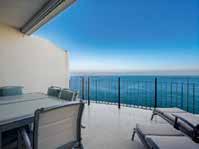



















En octubre de 2008, mientras el sistema financiero global colapsaba, un documento técnico revolucionario comenzó a circular por foros criptográficos: Bitcoin: A Peer-to-Peer Electronic Cash System. Su autor, bajo el seudónimo de Satoshi Nakamoto, no solo propuso una nueva forma de dinero descentralizado, sino que puso en marcha una transformación que hoy impacta sectores tan tradicionales como el inmobiliario.
Lo que nació como una alternativa al sistema bancario convencional hoy supera los $1.2 billones de dólares en capitalización y se posiciona como una nueva herramienta para inversionistas que buscan diversificar su portafolio, incluyendo en mercados inmobiliarios premium como Puerto Vallarta, Los Cabos o Tulum.
CONTINUA PÁGINA 14

In October 2008, as the global financial system collapsed, a revolutionary whi te paper began circulating on crypto forums: Bitcoin: A Peer-to-Peer Electronic Cash System. Its author, under the pseudonym Satoshi Nakamoto, not only proposed a new form of decentralized money, but also set in motion a transformation that today impacts sectors as traditional as real estate.
What began as an alternative to the conventional banking system now exceeds $1.2 trillion in market capitalization and is positioned as a new tool for investors seeking to diversify their portfolios, including in premium real estate markets such as Puerto Vallarta, Los Cabos, and Tulum.
CONTINUES PAGE 14


Bitcoin como reserva de valor y herramienta de compraventa
A diferencia de las monedas fiat, Bitcoin tiene un suministro limitado: solo existirán 21 millones. Esta escasez programada lo convierte en un activo atractivo frente a la inflación y la devaluación. En consecuencia, desarrolladores y brokers en zonas como Miami, Dubái o la Riviera Maya ya aceptan pagos en Bitcoin, algunos directamente y otros mediante conversión automática a moneda local.
Aceptar Bitcoin ya no es una excentricidad, sino una vía para atraer a compradores globales de alto perfil, muchos de los cuales ya han generado fortunas en criptoactivos.
Criptomonedas para salir de la volatilidad… hacia el ladrillo
El Bitcoin ha demostrado ser altamente volátil: pasó de $20,000 USD en 2017 a su -
perar los $60,000 en 2021, con fuertes correcciones intermedias. Pero precisamente por esa volatilidad, muchos inversores ahora canalizan sus ganancias hacia bienes raíces de lujo, buscando estabilidad patrimonial.
El resultado: una creciente adopción en mercados turísticos de México. En destinos como Puerto Vallarta, Tulum y Los Cabos, algunos desarrollos ya integran pagos en cripto como parte de su oferta, posicionándose ante un nuevo perfil de comprador internacional.
Más allá del pago: blockchain en la industria inmobiliaria
La verdadera revolución no es solo la moneda, sino la tecnología detrás: blockchain. Sus aplicaciones en el sector inmobiliario incluyen:
• Escrituras digitales y contratos inteligentes.
• Tokenización de propiedades,

Bitcoin as a store of value and trading tool
Unlike fiat currencies, Bitcoin has a limited supply: only 21 million will ever exist. This planned scarcity makes it an attractive asset in the face of inflation and de-
valuation. As a result, developers and brokers in areas like Miami, Dubai, and the Riviera Maya already accept Bitcoin payments, some directly and others through automatic conversion to local currency.
Accepting Bitcoin is no longer an eccentricity, but a way to attract high-profile global buyers, many of whom have already made fortunes in crypto assets.


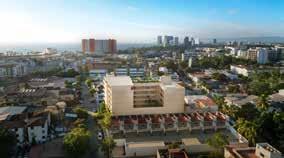











permitiendo la compra fraccionada de inmuebles.
• Transacciones más rápidas, seguras y auditables, sin necesidad de intermediarios bancarios.
• Esta tecnología no solo mejora la eficiencia operativa, sino que abre las puertas a la inversión colectiva internacional en bienes raíces, democratizando el acceso a propiedades antes exclusivas.
Riesgos reales, expectativas moderadas
Pese a su potencial, Bitcoin aún enfrenta obstáculos:
• Volatilidad del precio.
• Ausencia de regulación clara en muchos países.
• Baja adopción institucional en Latinoamérica.
• Percepciones negativas asociadas a ciberseguridad o lavado de dinero.
• Para el sector inmobiliario, esto implica que Bitcoin es una he-
rramienta útil para atraer cierto perfil de comprador, pero no sustituye la estabilidad que ofrecen las transacciones en moneda fiduciaria.
Hacia una convergencia inevitable
Con avances como Lightning Network y la regulación de exchanges en mercados clave, cada vez es más viable comprar propiedades con Bitcoin de forma rápida, segura y global. El escenario de adquirir un penthouse en Dubái, una villa en Los Cabos o un condominio en Miami con un clic ya no pertenece a la ciencia ficción.
La unión entre un activo digital como Bitcoin y un activo tangible como los bienes raíces representa una sinergia poderosa para el inversionista contemporáneo. Uno ofrece agilidad, descentralización y potencial de crecimiento. El otro, seguridad, estabilidad y legado.
Cryptocurrencies to escape volatility... towards real estate
Bitcoin has proven to be highly volatile: it went from $20,000 USD in 2017 to over $60,000 in 2021, with sharp corrections in between. But precisely because of this volatility, many investors are now channeling their profits into luxury real estate, seeking financial stability. The result: growing adoption in Mexican tourist markets. In destinations like Puerto Vallarta, Tulum, and Los Cabos, some developments already integrate cryptocurrency payments as part of their offerings, positioning themselves for a new international buyer profile.
Beyond payment: blockchain in the real estate industry
The real revolution is not just the currency, but the technology behind it: blockchain. Its applications in the real estate sector include:
• Digital deeds and smart contracts.
• Property tokenization, enabling fractional real estate purchases.
• Faster, more secure, and auditable transactions,without the need for banking intermediaries.
• This technology not only improves operational efficiency but also opens the door to international collective investment in real estate, democratizing access to previously exclusive properties. Real risks, moderate expectations
Despite its potential, Bitcoin still faces obstacles:
• Price volatility.
• Lack of clear regulation in many countries.
• Low institutional adoption in Latin America.
• Negative perceptions associated with cybersecurity or mon-


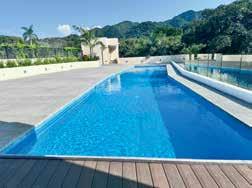

ey laundering.
• For the real estate sector, this means that Bitcoin is a useful tool to attract a certain type of buyer, but it does not replace the stability offered by fiat currency transactions.
Toward an Inevitable
With advances like the Lightning Network and the regulation of exchanges in key markets, it’s becoming increasingly feasible to buy property with Bitcoin quickly, securely, and globally. The scenario of purchasing a penthouse in Dubai, a villa in Los Cabos, or a condo in Miami with a click is no longer science fiction.
The union between a digital asset like Bitcoin and a tangible asset like real estate represents a powerful synergy for the contemporary investor. One offers agility, decentralization, and growth potential; the other, security, stability, and legacy.






LOS ÁNGELES.
Diane Keaton, la icónica actriz ganadora del Oscar, dejó un legado que se extiende mucho más allá de la gran pantalla. Su vida fue un fascinante doblete: la estrella de Hollywood y la sagaz inversora inmobiliaria y conservacionista arquitectónica. Lejos de la imagen de celebridad que simplemente compra mansiones, Keaton se dedicó durante décadas a una labor meticulosa de adquisición, restauración y “flips” estratégicos de casas históricas, amasando una fortuna personal que rivaliza con sus ganancias cinematográficas.
La reciente noticia de su fallecimiento ha puesto nuevamente en relieve este aspecto menos conocido, pero sumamente rentable, de su carrera.
Una Pasión con Raíces Profundas

El idilio de Diane Keaton con las estructuras comenzó temprano, influenciado por su padre, un agente de bienes raíces en Los Ángeles. Sin embargo, su verdadera práctica se consolidó al regresar a la costa oeste en los años 80. Keaton no buscaba casas nuevas y pulcras; su ojo experto se posaba en propiedades con historia, a menudo en estilos como el Colonial Español, el Mediterráneo o el Mid-Century Modern, que pedían a gritos una restauración respetuosa.
Ella misma lo resumió con una elocuencia característica: “Siempre tuve interés en las casas y el concepto de hogar, pero el problema es que nunca aterrizo y me quedo. Algo está mal. Pero algo está bien, porque me encanta”. Esta “adicción” a la arquitectura la llevó a: • Restauración con Integridad: Su enfoque no era modernizar, sino preservar la autenticidad. Un ejemplo notable fue la casa Samuel-Novarro, diseñada por Lloyd Wright (hijo de Frank Lloyd Wright), que ella restauró minuciosamente man-
Diane Keaton, the iconic Oscar-winning actress, left a legacy that stretches far beyond the silver screen. Her life was a fascinating double act: the Hollywood star and the shrewd real estate investor and architectural conservationist. Far from the image of a celebrity who merely buys mansions, Keaton dedicated decades to the meticulous work of acquiring, restoring, and strategically “flipping” historic homes, amassing a personal fortune that rivaled her cinematic earnings.
The recent news of her passing has once again highlighted this less-publicized, yet immensely profitable, aspect of her career.
Diane Keaton’s romance with structures began early, influenced by her father, a real estate agent in Los Angeles. However, her true practice took hold when she returned to the West Coast in the 1980s. Keaton was not looking for pristine, new houses; her expert eye fell on properties with history, often in styles such as Spanish Colonial, Mediterranean, or Mid-Century Modern, which were crying out for respectful restoration.
She herself summarized it with characteristic eloquence: “I always had an interest in homes and the concept of home, but the problem is I never really land and stay. Something’s wrong. But something’s right, because I love it.” This “addiction” to architecture led her to: • Restoration with Integrity: Her approach was not about modernization, but about preserving authenticity. A notable example was the Samuel-Novarro House, de-

teniendo los elementos originales Art Deco y la visión del arquitecto.
• Ventas Estratégicas: La clave de su éxito financiero fue el timing y la demanda generada por su gusto. Propiedades restauradas por Keaton se vendieron con notables ganancias y a menudo a otras celebridades, como una mansión Colonial Española de los años 20 que compró, restauró y vendió a Madonna.
El culmen de su pasión se manifestó en su proyecto personal más ambicioso: una casa que diseñó desde cero en Sullivan Canyon, Los Ángeles, y que documentó en su aclamado libro “The House That Pinterest Built” (2017).
En esta obra, Keaton reveló cómo utilizó la plataforma digital Pinterest como un “tablero de sueños” para conceptualizar su hogar. El resultado fue una imponente estructura de 750 metros cuadrados que fusionaba un estilo industrial-rústico con estética de granja, construida con 75.000 ladrillos recuperados. No era solo un hogar, sino un manifiesto sobre cómo el diseño puede ser per-

sonal, cómodo y sostenible, priorizando materiales recuperados y espacios abiertos.
La casa, que la actriz calificó como “la casa de mis sueños”, fue puesta a la venta en marzo de 2025 por 29 millones de dólares, meses antes de su deceso. Esta venta, con un potencial rendimiento de seis veces su inversión inicial de 4.7 millones de dólares en 2009, demostró, una vez más, que su ojo para la arquitectura era también un formidable motor económico.
Legado como
Más allá de sus inversiones, Keaton fue una activista por la conservación arquitectónica en

Los Ángeles, siendo miembro activo de la L.A. Conservancy durante más de dos décadas. Su implicación iba más allá de sus propias propiedades, luchando por la protección de edificios históricamente importantes como el antiguo Ambassador Hotel. Diane Keaton demostró que la estética no está reñida con el pragmatismo financiero. Su legado perdurará no solo en sus icónicas películas, sino también en el valioso patrimonio arquitectónico que rescató, redefinió y preservó para las generaciones futuras, convirtiendo su fascinación por los ladrillos y el diseño en una de las carreras inmobiliarias más exitosas y admiradas de Hollywood.

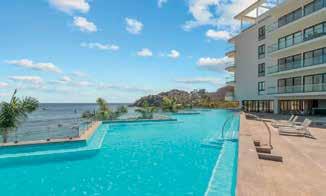
signed by Lloyd Wright (son of Frank Lloyd Wright), which she meticulously restored while maintaining the original Art Deco elements and the architect’s vision.
• Strategic Sales: The key to her financial success was timing and the demand generated by her taste. Properties restored by Keaton sold at remarkable profits and often to other celebrities, such as a 1920s Spanish Colonial mansion she bought, restored, and sold to Madonna.
The culmination of her passion was manifested in her most ambitious personal project: a house she designed from the ground up in Sullivan Canyon, Los Angeles, and documented in her acclaimed book, “The House That Pinterest Built” (2017).
In this work, Keaton revealed how she used the digital platform Pinterest as a “dream board” to conceptualize her home. The result was a striking 8,000-square-foot structure that merged an industrial-rustic style with farmhouse aesthetics, built with 75,000 reclaimed bricks. It was not merely a home, but a manifesto on how design can be personal, comfortable, and sus-



tainable, prioritizing salvaged materials and open spaces.
The house, which the actress called “my dream home,” was listed for sale in March 2025 for a reported $29 million, just months before her death. This listing, with a potential sixfold return on her initial $4.7 million investment in 2009, demonstrated, once again, that her eye for architecture was also a formidable economic engine.
Beyond her investments, Keaton was an activist for architectural conservation in Los Angeles, serving as an active member of the L.A. Conservancy for over two decades. Her involvement went beyond her own properties, fighting for the protection of historically important buildings like the former Ambassador Hotel.
Diane Keaton proved that aesthetics and financial pragmatism are not mutually exclusive. Her legacy will endure not only in her iconic films but also in the valuable architectural heritage she rescued, redefined, and preserved for future generations, transforming her fascination with bricks and design into one of Hollywood’s most successful and admired real estate careers.




















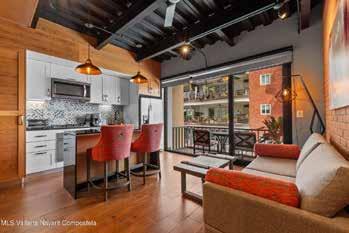
























El emblemático Malecón de Puerto Vallarta, corazón turístico y cultural de la ciudad, vive una nueva etapa de renovación. Desde agosto, se llevan a cabo trabajos de rehabilitación y ampliación financiados por la Zona Federal Marítimo Terrestre (ZOFEMAT), con el objetivo de mejorar la experiencia de los visitantes y preservar este espacio icónico frente al Pacífico.
Las obras actuales incluyen la sustitución de losas deterioradas, instalación de nuevas luminarias LED, bancas renovadas, jardineras con sistema de riego automatizado y la rehabilitación del cableado eléctrico. Además, se aplicará pintura nueva en varios tramos, buscando mantener la imagen vibrante y cuidada que caracteriza al paseo.
La siguiente fase contempla una ampliación hacia el norte, que extenderá el malecón desde la calle 31 de Octubre hasta la calle Argentina, a lo largo de la Avenida México, conectando así con el Parque Hidalgo. Este proyecto permitirá que el corredor peatonal inicie formalmente en ese punto, integrando nuevas áreas de descanso,

arte público y miradores con vista al mar. De acuerdo con autoridades municipales, la obra se encuentra en calendario y se prevé su conclusión en diciembre de 2025, justo a tiempo para la temporada alta de turismo. Con ello, Puerto Vallarta refuerza su apuesta por un turismo más accesible, sustentable y ordenado, manteniendo su malecón como uno de los paseos marítimos más emblemáticos de México.



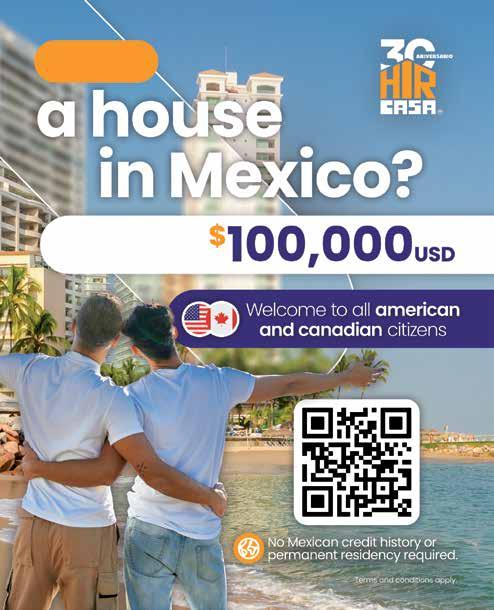

Puerto Vallarta’s beloved Malecón —the city’s cultural and touristic heart— is entering a new phase of renewal. Since August, renovation and expansion works have been underway, funded by the Federal Maritime Terrestrial Zone (ZOFEMAT), with the goal of enhancing the visitor experience and preserving this landmark oceanfront promenade.
Current improvements include the replacement of damaged paving stones, installation of new LED lighting, refurbished benches, landscaped areas with an automated irrigation system, and upgraded electrical wiring. Fresh paint and restored public spaces aim to maintain the Malecón’s lively and well-kept appearance.
The next stage of the project involves a northern expansion, extending the Malecón from 31 de Octubre Street to Argentina Street along Avenida México, linking it directly to Parque Hidalgo. This new section will formally mark the starting point of the promenade and feature new rest areas, public art, and scenic viewpoints overlooking the Pacific.
According to local authorities, the project is on schedule and expected to be completed by December 2025, just in time for the high tourism season. With these upgrades, Puerto Vallarta reaffirms its commitment to accessible, sustainable, and well-planned tourism, keeping its Malecón among the most iconic seaside walkways in Mexico.


POR SUSAN A. MCKENNA, JD
– CORREDORA PRINCIPAL, SHORELINE REALTY GROUP PV
Al cerrar el último trimestre de 2025, el mercado inmobiliario en la Bahía de Banderas —que abarca Puerto Vallarta y Riviera Nayarit— continúa su compleja evolución. Aunque el sector residencial, especialmente el de condominios, sigue siendo el componente más visible y activo, comienzan a destacar nuevas dinámicas en los mercados comercial, empresarial y de terrenos que merecen igual atención.
Este reporte analiza los principales indicadores del mercado residencial y, posteriormente, pro-
fundiza en la actividad comercial, empresarial y de terrenos, sectores que están delineando la próxima fase de oportunidades para la región.
Panorama del segmento residencial
Condos (octubre 2024 –septiembre 2025)
• Inventario elevado: el índice de absorción se sitúa en alrededor de 34 meses, lo que indica una amplia oferta para los compradores.
• Precio promedio de venta: aumento de aproximadamente 13.9 % interanual.
• Relación venta/precio de lista: 96.7 %, lo que refleja que las propiedades de calidad se siguen cerrando cerca del precio solicitado.
• Tiempo promedio en el mercado: 258 días, una ligera alza mensual pero una reducción del 24 % frente al año anterior.
• Nuevas listas: caída del 78 % interanual.
• Interpretación: El mercado de condominios sigue favoreciendo a los compradores, pero las unidades llave en mano, bien ubicadas y con acabados de alto nivel mantienen incrementos de valor de dos dígitos y sólidas tasas de cierre. La disminución de nuevas listas podría anticipar una futura contracción en la oferta.
Casas (mismo periodo)
• Absorción: mejora a 23–24 meses, frente a los 30–31 del in-
BY, SUSAN A. MCKENNA, JD PRINCIPLE BROKER, SHORELINE REALTY GROUP PV
As we move into the closing quarter of 2025, the real estate market in the Bay of Banderas region (Puerto Vallarta & Riviera Nayarit) continues its complex evolution. While the residential sector, especially condos, remains the largest and most visible component, new dynamics are emerging in commercial, business and land markets that deserve equal attention. In this update report we examine key metrics for condos and houses, then shift to commercial/business, land activity
and how these segments are shaping the next phase of market opportunity.
Condos (October 2024 –September 2025)
• Inventory remains high: absorption (MOI / months of inventory) stands at approx. 34 months, meaning buyers still have a wide selection. Shoreline Realty Group PV
• Average sale price: Up ~13.9 % year-over-year. Shoreline Realty Group PV
• Sale-to-list ratio: ~96.7%, indicating that quality properties are still closing near asking.



vierno pasado.
• Precio promedio: alrededor de 700 mil USD, dependiendo de la ubicación.
• Días en el mercado: promedio de 295 días, más que los condominios.
• Relación venta/precio de lista: entre 94 y 96 %.
• Interpretación: El sector de vivienda unifamiliar muestra una recuperación gradual, aunque continúa siendo un mercado de compradores. La presentación, el estado y la localización son determinantes para lograr cierres más rápidos.
En síntesis, el mercado residencial se ha vuelto selectivo: los compradores tienen opciones, pero las propiedades bien terminadas y situadas en zonas premium siguen registrando ganancias. Las unidades obsoletas o mal ubicadas enfrentan plazos más largos y mayor margen de negociación.
Tendencias en el segmento comercial y de negocios
Aunque las ventas de propiedades comerciales y de negocios representan un volumen menor frente al residencial, los datos revelan una demanda latente significativa y una brecha de oportunidad en la forma en que estos activos se valoran, promocionan y transaccionan.
El reto principal es que muchos agentes tratan los negocios como simples inmuebles, cuando en realidad requieren un enfoque distinto, con métodos de valuación basados en flujos de efectivo, rentabilidad y riesgo operativo.
Datos recientes del sistema AMPI MLS:
Ventas de negocios: 1 transacción (~200 mil USD).
Ventas de propiedades comerciales: 3 transacciones (~746 mil USD en total).
Estas cifras reflejan un mercado poco líquido más que una falta de interés.
Conclusión:
Existen numerosas listas, pero pocas operaciones cerradas.
Se requiere una división especializada o capacitación dentro de AMPI para manejar activos empresariales y comerciales de manera profesional.
Para los inversionistas, este segmento representa una zona de oportunidad estratégica: negocios en marcha, edificios de uso mixto, propiedades de hospitalidad y activos con flujo de ingresos comienzan a atraer capital transfronterizo.
El interés por activos generadores de renta está creciendo, impulsado por un turismo sólido, migración residencial constante y la estabilidad de operaciones en pesos, que ofrece diversificación natural para inversionistas de EE. UU. y Canadá.
Sin embargo, este viraje también conlleva riesgos de ejecución. El mercado comercial de Vallarta aún carece de transparencia, metodologías de valuación consistentes y
Shoreline Realty Group PV
• Days on market (DOM): ~258 days on average; slight MoM increase but down ~24 % YoY. Shoreline Realty Group PV 1
• New listings: Down ~78 % YoY in this segment. Shoreline Realty Group PV
• What this Means? The condo market remains a buyer-rich environment, but well-presented, turnkey units in desirable locations continue commanding price increases and double-digit appreciation with relatively strong closing ratios. The drop in new listings signals possible supply contraction ahead.
• Absorption (MOI) for houses improved to ~23-24 months from last winter’s ~30-31.
• Average sale price for houses is ~$700k USD (depending on locality) though sample sizes are smaller.
• Days on market remain longer than condos (~295 days average).
• Sale-to-list ratio ~94-96%.
• What this Means: The single-family home sector is gradually improving from its slower pace earlier in the year, but still remains more of a buyer’s market than a heated seller’s field. Presentation, condition and location remain crucial for faster closing.
• In short, the residential market is selective: Buyers have choices, but sellers of well-finished, well-located properties are still capturing gains. The premium for flight-to-quality has grown. At the same time, sellers of dated or poorly positioned assets are experiencing longer time frames and more negotiating room for buyers.
Although the commercial and business sales segment remains relatively small in terms of recorded volume compared to residential, the data suggests significant latent demand and an opportunity gap in how these assets are being marketed, priced and transacted.
• The key challenge: many realtors treat business assets like residential listings and small business buyers are particularly nascent for business acquisitions. Still, business/asset sales require a different valuation, marketing and operating-due-diligence framework. Even the contract and purchase process is much different for buying/selling a business than it is for real property (real estate).
Latest Business Acquisition snapshot from the AMPI MLS system:
• Business sales: 1 transaction (~US$200 K volume) for the period. Commercial property sales: 3 transactions (~US$746 K total volume) YTD; average sale
















comprensión de los indicadores de arrendamiento y operación. La profesionalización será clave para su madurez y expansión.
El mercado de terrenos es uno de los indicadores más reveladores del rumbo inmobiliario en la Bahía de Banderas. En el último año se registraron 97 transacciones, 57 de ellas en lo que va del año, con un volumen total cercano a 31.6 millones de USD.
Aunque el número total de ventas aumentó, el precio promedio por operación bajó de 325 000 a 256 000 USD, mientras que los días promedio en el mercado se redujeron notablemente.
Esta combinación de menores precios y mayor velocidad de venta muestra un cambio claro en el comportamiento de los compradores, que ahora buscan lotes más pequeños y accesibles en zonas en transición, apostando por la plusvalía futura conforme crecen la infraestructura y la población.
Surgen, sin embargo, interrogantes: ¿veremos otra oleada de proyectos residenciales de bajo costo cuando el mercado ya muestra saturación en este segmento? ¿O se orientará el desarrollo hacia usos comerciales y turísticos más estratégicos?
Todo apunta a lo segundo. Los corredores mixtos, resorts boutique, complejos de bienestar y desarrollos de hospitalidad podrían ser la siguiente fase de expansión. Además, cada vez más compradores extranjeros adquieren terrenos para construir residencias personalizadas o villas con potencial de renta, en lugar de optar por inventarios estandarizados.
En conjunto, el aumento en las ventas de terrenos durante 2025 representa una reconfiguración estratégica del capital. El futuro dependerá de la lectura que hagan los desarrolladores y del manejo que las autoridades locales den al uso de suelo, densidad e infraestructura.
Temas clave y perspectivas estratégicas
Predominio del “flight-to-quality”
Los compradores se inclinan hacia propiedades premium: unidades llave en mano, con vista, amenidades y administración profesional.
Posible contracción de la oferta
Aunque el inventario aún es alto, la fuerte caída en nuevas listas

y en los días de mercado de terrenos podría anticipar un ajuste en la disponibilidad.
Segmentación entre ganadores y rezagados
• Ganadores: ubicaciones privilegiadas, acabados mod rnos, reglas claras de renta, edificios orientados al mercado internacional.
• Rezagados: propiedades antiguas, con incertidumbre legal o falta de amenidades.
Nuevo enfoque hacia activos comerciales y empresariales
Los inversionistas que entren temprano en este segmento pueden capturar un valor superior, siempre que cuenten con conocimiento especializado.
Temporada alta 20252026: la prueba decisiva
El invierno pondrá a prueba la capacidad del mercado para absorber el inventario. Se espera un aumento moderado en el volumen de transacciones, pero la recuperación completa podría extenderse hasta 2026 o incluso 2027.
Proyecciones para cierre de 2025 e inicio de 2026
• Precios: leve apreciación (2–5 %) en propiedades bien ubicadas; posible ajuste de hasta -2 % en inventario rezagado.
• Volumen: incremento estimado del 10–15 % respecto a mediados de 2025.
• Comercial y negocios: mayor flujo de operaciones, aunque con tiempos de cierre prolongados.
• Terrenos y nuevos desarrollos: más lanzamientos en zonas
~US$248-260 K.
• Compared with residential, this is a very low transaction count which suggests underliquid market rather than lack of interest. What this Means:
• The low number of closings suggests many listings exist, but few are moving. This supports our hypothesis that brokers/investors may lack the specialized skills for valuing business goodwill, cashflow assets, lease-back repositioning and operational risk.
• There is a clear need for a separate division (AMPI Commercial & Business Unit) or dedicated training for real estate agents to treat business and commercial assets differently from residential.
• For investors: this is a strategic opportunity zone. Turnkey businesses, mixed-use commercial buildings, hospitality assets and income-producing real estate are increasingly being sought by cross-border capital.
• What this Means With residential supply still elevated and competition among sellers intensifying, investors are beginning to redirect their focus toward income-producing commercial and business assets. This emerging shift is supported by several strong fundamentals: a resilient tourism sector, steady lifestyle migration into the Bay of Banderas region, and the relative stability of peso-denominated operations that provide natural diversification for U.S. and Canadian investors.
However, this transition also carries execution risk. The commercial and business market in Puerto Vallarta remains under-structured,
questions: Do we truly need more low-cost, high-density condos at a time when absorption is already slow and the resale market is saturated? Developers chasing short-term margins could inadvertently extend the current oversupply cycle.
Alternatively, these land buys may be positioning for commercial and hospitality expansion. In our opinion, this is a far more strategic use-case for the region’s long term growth. Mixed-use retail corridors, boutique resorts, wellness retreats, and even assisted-living concepts could emerge from this accumulation phase, aligning with broader tourism and lifestyle trends.
with limited transparency, inconsistent valuation practices, and uneven understanding of lease and operating metrics. These challenges are likely to make transactions slower and more selective, favoring buyers and advisors with deeper financial expertise and access to verified operating data. Over time, as professional standards improve, this segment is poised to mature into one of the region’s most promising investment categories.
Land remains one of the most telling barometers of market direction in the Bay of Banderas. Over the past year, 97 land transactions have been recorded, 57 of them year-to-date, representing roughly $31.6 million USD in total volume. While total sales are up, the average price per sale has dropped from about $325,000 to $256,000 USD, and the average days on market have shortened sharply.
This combination of lower prices and faster absorption, signals a decisive shift in buyer behavior. Rather than competing for large coastal tracts or high-priced master parcels, investors are snapping up smaller, more affordable lots in transitional neighborhoods, betting on future appreciation as infrastructure and population growth push outward from the core.
What remains uncertain, but increasingly consequential, is what these acquisitions will become.
One plausible outcome is another wave of residential pre-construction, particularly in inland or mid-tier zones where land remains cheap and zoning is flexible. Yet that raises important
There is also evidence that foreign buyers are entering this space directly, purchasing land to build custom homes or incomegenerating villas rather than settling for the increasingly commoditized inventory of entry-level condos. This reflects a shift toward personalization and quality. Buyers are preferring to design exactly what they want instead of compromising on what’s available.
In short, 2025’s surge in land transactions represents more than a development uptick—it’s a strategic repositioning of capital. Whether the next cycle delivers more of the same or ushers in a more thoughtful blend of residential, commercial, and hospitality projects will depend on how developers read the market—and how municipalities manage zoning, density, and infrastructure in the years ahead.
Even in a high-inventory environment, buyers are gravitating toward premium product — turnkey, view-units, amenities-rich, professionally managed buildings. These assets are commanding stronger pricing and faster sales.
Although inventory remains elevated (especially condos), the drastic drop in new listings and in land parcel days on market suggests supply may begin to tighten. Developers are likely holding back from flooding the market, waiting for improved absorption metrics.








emergentes a finales de 2025 e inicios de 2026.
• Entorno de negociación: márgenes más ajustados para propiedades premium; los compradores aún podrán negociar descuentos del 4–8 % en inventarios promedio.
Recomendaciones
Para vendedores:
• Si cuentas con un producto premium, este es el momento de listar con una estrategia de presentación agresiva y precios ajustados al mercado. Si tu propiedad es estándar o requiere renovación, considera remodelar, reposicionar o esperar el siguiente ciclo. Para negocios o propiedades comerciales, asóciate con asesores especializados en fusiones y adquisiciones. Para compradores e inversionistas:
• Enfócate en propiedades “ganadoras”: llave en mano, buena ubicación y reglas de renta claras.
The bifurcation is clear:
• Winners: Prime locations, turnkey condition, strong amenity sets, international-oriented buildings.
• Laggards: Dated product, lack of rental rules clarity, units in weak locations, older stock needing renovation.
• Sellers of laggard assets must adapt to longer timelines, more concessions and possibly price resets.
• For buyers: opportunity zones are expanding, but underwriting must be exacting.
The residential story dominates, but the commercial/business and land segments are quietly writing the next chapter. Investors who pivot into these zones early may capture outsized value, but success requires specialized knowledge (valuation, operations, due diligence).
Evalúa el rendimiento operativo de activos comerciales más allá del valor físico. En terrenos, analiza infraestructura, tiempos de desarrollo y permisos.
• Planea con visión de varios años: el valor puede consolidarse entre 2026 y 2027.
El mercado inmobiliario de la Bahía de Banderas sigue siendo uno de los más atractivos de México, combinando estilo de vida, demanda internacional y una amplia diversidad de productos, desde condominios de entrada hasta propiedades de lujo y activos comerciales.
Sin embargo, la tendencia ya no es lineal: el mercado exige precisión, estrategia y una lectura fina de los segmentos. Los inversionistas exitosos serán aquellos que entiendan que cómo comprar —producto, ubicación, ejecución y momento— es tan importante como dónde comprar.
days on market may remain high until brokerage education and market awareness improve.
• Land & New Development: Expect increased pre-construction launches in emerging zones; developers will convert land inventory into product, so expect announcements in late 2025 and early 2026.
• Negotiation Environment: Saleto-list ratios may tighten for premium product (moving toward 97-98%), but remain more favorable to buyers for average product (buyers may still obtain 4-8% discount or value-add positioning).
• If you have a premium product, now is the time to list with aggressive presentation and targeted pricing.
• If you have standard or dated inventory, consider renovation, repositioning or holding for the next cycle; be realistic about timeline and pricing if you must sell now.
The fast-approaching “high-season” (Nov/Dec-Mar/ Apr) will test whether demand firms sufficiently to absorb the elevated inventory. Early indicators suggest modest uptick in transaction volume is likely. Although, we predict that a full recovery from this level of absorption may span well into 2026, possibly even 2027. Land-and-development buys suggest the next building wave may begin in 2026.
• Prices: For well-positioned properties (condos & houses in strong zones) expect modest further appreciation (2-5%) by year-end. For dated or poorly positioned inventory, expect flat to slight depreciation (-1 to 2%).
• Volume: Transaction volume will likely pick up modestly as snowbird and rental-season demand returns, but may not reach prior peaks. We expect ~10-15% increase over mid2025 levels.
• Commercial & Business: Expect acceleration in deal flow, especially for income-producing assets, though average
• For land accumulation: be mindful of infrastructure risk, timeline, service delivery and zoning entitlements.
Underwrite for a multi-year horizon even in residential – given absorption and new build pipeline, value may accrue through 2026-27.
• Institutionalize your process: use data, verify HOA/bylaws, rental history, building restrictions, build-out timeline and exit strategy.
The Bay of Banderas real estate market remains one of Mexico’s most compelling coastal plays, offering lifestyle appeal, cross-border demand, and a spectrum of product types from entry-level condos to luxury homes and commercial assets. What’s changed is the nuance: the market is no longer uniformly upward-sloping. Instead, it demands choosing the right segment, preparing for longer timelines where needed, and operating with sharper underwriting and operational discipline.
• For commercial/business listings: partner with business merger & acquisition advisors who understand operational and profit metrics, not just real estate comps.
• Focus on product in the winner category: turnkey, strong building rules, rental-friendly, good location.
• In commercial/business land plays: focus on yield and operating history, not just bricks and mortar.
By adding commercial/business and land segments into our reporting, we see the full ecosystem of value creation and strategy emerging. This isn’t just about buying a condo and waiting. Real Estate Trends in Vallarta are about positioning for a broader cycle of development, yield orientation, and lifestyle migration.
For 2025 closing and into 2026, the winners will be those who recognize that how you buy (such as product, location, execution, and timing), matters as much as where.
Monthly Publication
Complimentary Issue Number 409 Noviembre - Nov ember 2025
PUBLISHER
Ana María Platas

anamaria@propertyjournal.com.mx
VENTAS / SALES
Camila Acuña 55-256-58917 sales@propertyjournal.com.mx
DESIGNER Rodolfo Preciado
OFFICE
Puerto Vallarta, Jalisco • TEL. (322) 224 9258 email: anamaplatas@gmail.com
PRINT RUN 10,000 copies
Titulo de registro de marca 754392. Toda la información publicada en los anuncios es responsabilidad de los anunciantes. www.propertyjournal.com.mx info@propertyjournal.com.mx












Puerto Vallarta, conocida por su belleza, es también hogar de una crisis silenciosa: el sufrimiento de innumerables perros callejeros, heridos y abandonados. Sin embargo, en medio de este desafío, brilla un faro de esperanza y amor incondicional: la Fundación Yvonneka.
Desde su fundación en 2012 por la visionaria Yvonne Kalman, esta organización ha dedicado su existencia a una misión singular y conmovedora: rescatar a perros en las condiciones más terribles y devolverles no solo la salud, sino la confianza y un hogar permanente y amoroso.
Ahora, tienes la oportunidad de ser parte de esta noble causa. La Fundación Yvonneka te invita a su evento anual más importante, "Frida X," su cena de gala y recaudación de fondos, un encuentro esencial para asegurar la continuidad de su labor vital.
La Misión Yvonneka: Rescate, Rehabilitación y Resiliencia
La Fundación Yvonneka opera bajo una filosofía simple pero poderosa: ningún perro merece sufrir. Su trabajo va mucho más allá del simple rescate:
• Rescate y Rehabilitación Intensiva: Rescatan a perros callejeros y heridos, brindándoles atención médica y rehabilitación completa. Lograr la salud óptima y la esterilización es la prioridad.
• Hogar Permanente y Cuidado 24/7: La fundación sostiene el albergue donde residen los perros rescatados, el cual cuenta con personal dedicado las 24 horas del día, garantizando mantenimiento y atención veterinaria constante.
• Sanación Emocional: Se especializan en socializar a los perros que han sufrido maltrato, ayudándoles a confiar en los humanos nuevamente después de sus previas y terribles experiencias.
• Adopciones Globales: Trabajan incansablemente con organizaciones aliadas en Estados Unidos y Canadá para encontrar hogares definitivos. También colocan perros directamente con familias cualificadas en el área de Puerto Vallarta.
• Un costo que vale la pena: Rehabilitar a un solo perro puede ascender hasta los $1,000 USD. Sin embargo, la voluntad de vivir de cada perro, su amor incondicional y su gratitud son, como bien dice la fundación, invaluables.

¡Tu Apoyo es Urgente y Fundamental!
La Fundación Yvonneka depende enteramente de tus donaciones para continuar esta labor. La necesidad de proporcionar alimentos para animales callejeros es constante, y cada contribución permite que la misión de rescate siga operando.
Al apoyar a Yvonneka, no solo salvas vidas, sino que obtienes beneficios fiscales significativos: la fundación es una organización benéfica sin fines de lucro, lo que significa que tus donaciones son deducibles de impuestos tanto en México como en los Estados Unidos.
¡No lo dudes más! Contacta a la Fundación Yvonneka hoy mismo y sé parte de la solución.
https://yvonnekafoundation.org/
Puerto Vallarta, known for its beauty, is also home to a silent crisis: the suffering of countless stray, injured, and abandoned dogs. Yet, amidst this challenge, a beacon of hope and unconditional love shines brightly: the Yvonneka Foundation.
Since its founding in 2012 by the visionary Yvonne Kalman, this organization has dedicated its existence to a singular and moving mission: to rescue dogs in the most dire conditions and restore not only their health but also their trust and a permanent, loving home.
Now, you have the opportunity to be part of this noble cause. The Yvonneka Foundation invites you to its most im -
portant annual event, “Frida X,” its gala dinner and major fundraiser, a crucial gathering to ensure the continuity of their vital work.
The Yvonneka Foundation operates under a simple yet powerful philosophy: no dog deserves to suffer. Their work extends far beyond simple rescue:
• Intensive Rescue and Rehabilitation: They rescue stray and injured dogs, providing them with complete medical attention and rehabilitation. Achieving optimum health and sterilization is the priority.
• Permanent Shelter and 24/7 Care: The foundation supports the shelter where rescued dogs reside, which has dedicated staff 24 hours a day, ensuring constant maintenance and veterinary care.
• Emotional Healing: They specialize in socializing dogs that have suffered mistreatment, helping them to regain trust in humans after their previous terrible experiences.
• Global Adoptions: They work tirelessly with partner organizations in the United States and Canada to find all the dogs permanent homes. They also place dogs directly with qualified families in the Puerto Vallarta area.
• A Cost Worth Paying: Rehabilitating a single dog can amount to $1,000 USD. However, the individual dog’s will to live, their unconditional love, and their gratitude are, as the foundation rightly affirms, priceless.
The Yvonneka Foundation is entirely dependent on your donations to continue this work. The constant need to provide food for stray animals is pressing, and every contribution allows the rescue mission to keep operating.
By supporting Yvonneka, you not only save lives but gain significant tax benefits: the foundation is a non-profit charitable organization, meaning your donations are tax-deductible in both Mexico and the United States.
Do not hesitate! Contact the Yvonneka Foundation today and be part of the solution.
https://yvonnekafoundation.org/

